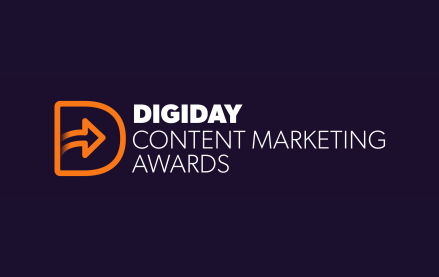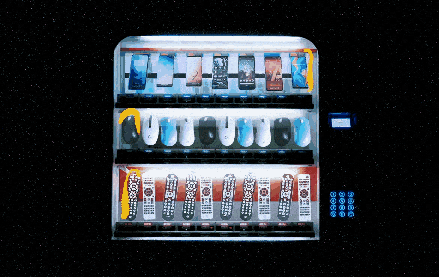Like sharks, consumers throw off intent signals before they chomp down

This article was written by Qualia CEO Kathy Leake.
In today’s consumer environment, it’s all about the short list.
With the tools and signals available today, it’s never been easier to dive into the “mid funnel” — that magical interzone where average Joes and Janes start their journey to becoming your valued customers. But let’s consider what happens in this zone. After learning about your brand, what’s next? Is Joe price-checking? Is Jane wish-listing? Are they tweeting about their dream vacation in Bali, which happens to be your market?
If you can’t answer these questions, you’re not alone. This knowledge gap is a fundamental problem with advertising. But thanks to new intent marketing technology, brands can finally glean and work with this mid-funnel data. The goal is getting your brand on their short list.
Intent is not a straight shot along a mappable path
Before we go any further, let’s call the mid-funnel by its rightful name: the Consideration Stage. The Consideration Stage sits at the heart of the buying process. It’s the sweet spot that, to their detriment, most marketers fail to adequately address.
Advertising has traditionally focused on lead generation (at the top) and closing the sale (at the bottom). Unsure of how to monitor (and, of course, influence) potential customers during the Consideration Stage, brands have relied on unreliable tracking tricks and unproven predictive analyses.
The fact is, consumers zigzag and pinball along their own personal purchase paths. Most sales have more to do with factors such as product performance, feature set, pricing, sales experience, service and personal preferences than broad brand campaigns.
As a purchase approaches, it’s too late for brand advertising. Conversely, direct response at this point is preaching to the faithful and may actual harm ROI by discounting guaranteed sales.
Ads have maximum impact on the short-list
Rather than bombarding with brand messages or retargeting with coupons, marketers should instead concentrate on the consumer’s “short list,” which is figuratively written during the Consideration Stage.
It’s at this point in the purchase process that consumers are actively gathering information, whether it’s formally online or casually among friends and family. Should they trust this brand? Is there value in this purchase? Often, they’re not even aware they’re making a short list.
Advertising has the most impact at this crucial point between opinion and evaluation:

Yet, ad spend is traditionally at its lowest here. Why? Because, until recently, it’s been very difficult to precisely target customers during this stage of the process.
More signals mean more opportunities to connect
Living such highly connected lives, consumers now broadcast intent signals all day long, across dozens of channels and in countless contexts. The trick is knowing how to filter, collate and associate these signals with a purchase consideration.
Take, for example, Joe and Jane’s dream vacation. When they search for hotels in Bali and flights from LAX, it’s not enough to target them with all-purpose ads. Smart marketers build profiles that cross-reference behavior points to deliver the most accurate messages. For example, does she tweet about her favorite luxe hotels? Or does he book the cheapest rooms whenever possible? What if both are true?
Utilizing these signals — and hundreds if not thousands more — we can now precisely deliver messages to consumers in the Consideration Stage when they’re building their short list.
This is the new and truer way to the heart of it all. Intent signals allow marketers to find, reach and influence customers who are actively in the market for their product. Not all signals are equally valuable, of course, which is where technology comes into play. Multiple intent signals must be triangulated and sorted according to their quality. This must be done across devices and in real time.
It’s critical that we consider the untapped potential of these “mid-funnel” prospects. By instead identifying them as “considering customers,” we can reach them when advertising has the most proven impact. The ultimate goal is sales, of course, but the immediate goal is getting your name on their short list.
Homepage image courtesy Christopher Polk / Getty Images Sport
More from Digiday

Marvel Studios, eBay, HelloFresh and Peacock are Digiday Content Marketing Awards winners
This year’s Digiday Content Marketing Awards successfully leveraged video content and personalization to craft compelling narratives that resonated with audiences. User-generated content and content collaboration also emerged as priorities as brands looked to expand reach and audience engagement. For instance, in the Best Event category, eBay won for its partnership with Vogue and rapper Ice […]

Del podcast a la pantalla streaming, la estrategia bicultural de Sonoro conquista asociaciones con Netflix
Suscríbete al newsletter de Digiday en Español aquí para recibir las últimas noticias sobre el sector de marcas y la industria del marketing. Hoy por hoy el competido mundo del podcast representa una nueva nueva sinergia para los medios de comunicación y las marcas, sobretodo si el producto es entretenido, polifacético y multicultural. Bajo esa […]

CMO Strategies: Marketers say demographic data is most important for ad targeting on streaming platforms
This is the fourth installment in Digiday’s multi-part series covering the top ad-supported streaming services and part of Digiday’s CMO Strategies series. In this report, we examine which types of first-party data are most important to marketers for ad targeting on streaming platforms.






